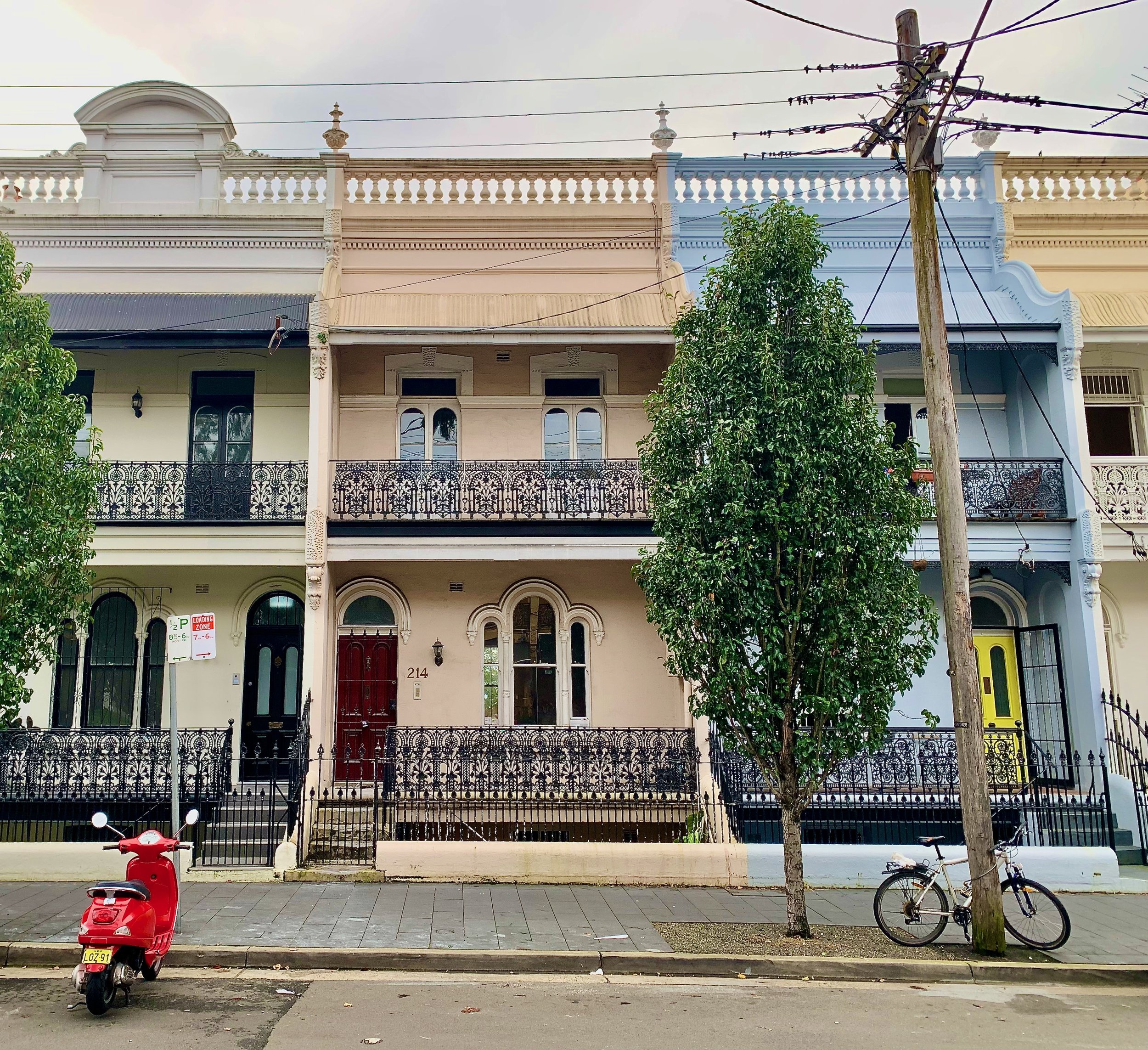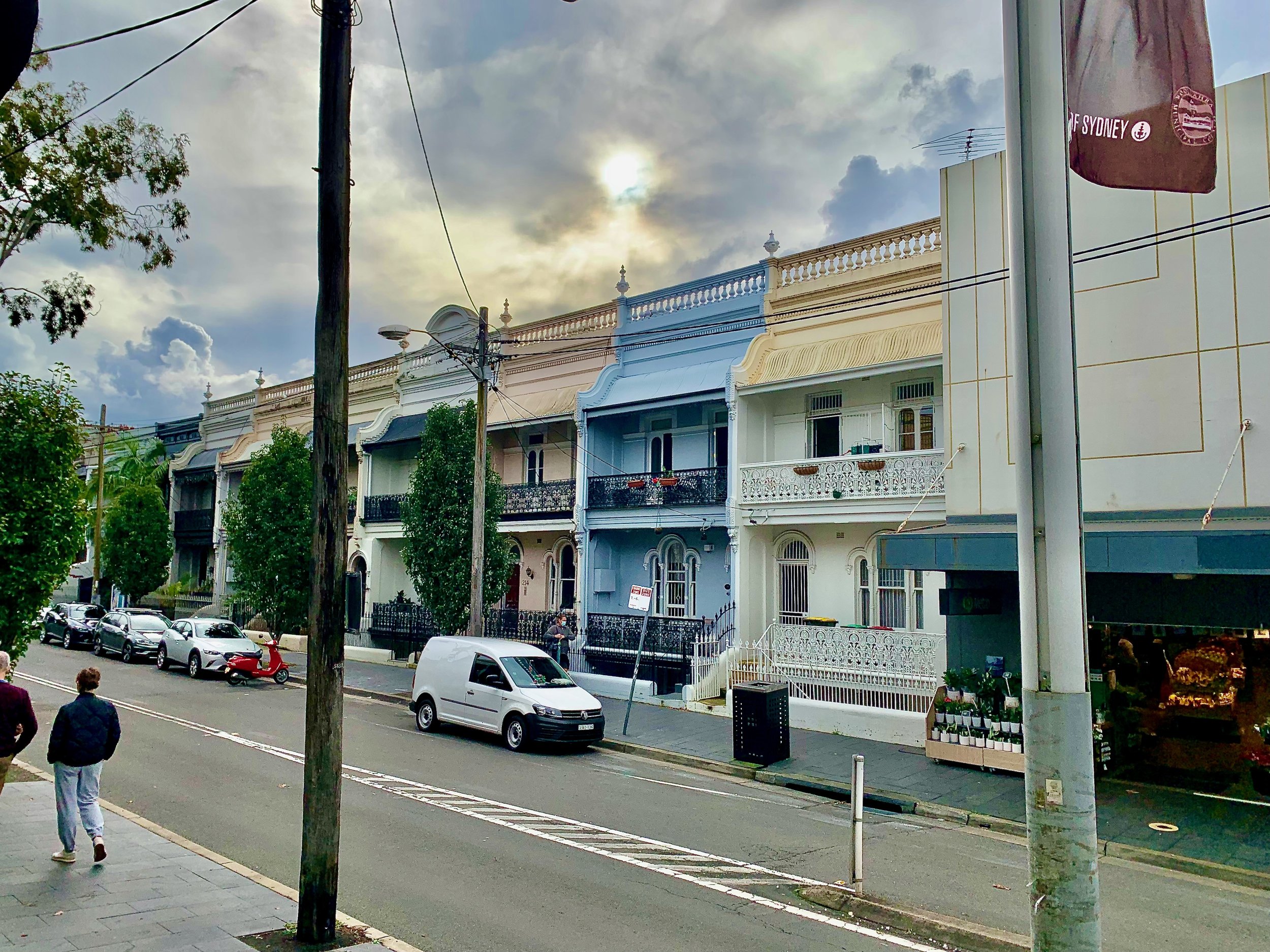The Terrace Detective: Glenmore Rd
In our last Terrace Detective column we sleuthed some terrace names on Paddington’s Stafford St. This time we are going bigger or, more precisely, longer.
Our new case features some terrace houses on Glenmore Rd and explores this history of Paddington’s longest thoroughfare. In addition to the trusty Sands Postal Directory we will also use the National Library of Australia’s Trove website to make our discoveries.
In our last column, we touched on why some terraces had names. For those who have come in late I’ll give you a quick recap.
During the early days of Paddington’s development, it was often unclear how many houses were going to be built on a street. House names were therefore invaluable for working out who lived where before the street numbers were finally allocated. They also helped personalise houses that were often built in groups.
Now to our target site. I am going to focus on the row of terrace houses on the north side of Glenmore Rd around that little alleyway that links to Cooper St. Numerically, that's from 192 all the way east to Woolworths Metro.
From a visual inspection, it looks like a group of two terraces at 192 to 194, standalone terraces at 196 and 198, a group of three terraces from 200 to 204 and then a big row of seven terraces through to the supermarket (this last group has a fantastic example of a horse gate between 210 and 212 if you need to get your pony into the backyard).
As well as being Paddington’s longest street, Glenmore Rd was also its first. It started out as a bullock track from the famous gin distillery of Robert Cooper down in the valley of Paddington back up to the ridge line to connect with South Head Rd (sections of the original South Head Rd were renamed Oxford St beginning about 1875).
Historic images thanks to City of Sydney
Looking first to the Sands Directory, I will be cautious and pick up in the year 1930. This bet pays off and the numbers all appear to match up. We have the Nugal Hall flats listed at 190 and then terraces listed from 192 to 218 before hitting The Five Ways Picture Palace at 222.
For those who haven’t read the plaque outside Woolworths, it was a cinema long before it was a supermarket (though they do have the wrong dates on their plaque — the cinema was there at least 15 years earlier, according to Sands).
Now we will start looking earlier. Nugal Hall had not been built in 1925 and in its place stood the Glen Ayr Private Hospital from 174 to 190. It’s the same story in 1905 but in 1910 we have some changes. The cinema isn’t there — the listing at 222 is for Deep Dene. Similarly, the private hospital isn’t there but it is still called Glen Ayr and it is housing the Sisters of the Church and their Collegiate High School.
The year 1910 also gives our first house name, Kameruka at 194 — this will help us keep track of the order as we move to earlier years.
Referencing the 1908 Sands Directory, the numbers all match up. We now have Avoca at 192 to add to Kameruka next door at 194. A key year is 1906 — Avoca and Kameruka are listed as at 138 and 140. Hello, street re-numbering.
This is a great example of why you cannot just go to an early Sands Directory and look up your street number — you could be looking up the history of a different house.
I’ve skipped a few years earlier. In 1889, there are no street numbers for our subject group but plenty of names. Cross referencing with the 1890 and 1892 issues we have hits on every terrace name with the exception of 196 and 198.
As an aside, it is quite common in the earlier Sands Directory for occupations to be listed as well as name and address. In 1892, for instance, we have a journalist, a surveyor, an insurance agent, a reverend (C. of E.), an actor, a trained nurse and an accoucheuse (which I gather was a fancy midwife qualification at the turn of the century).
I think we’ve exhausted the Sands so we will move on to Trove. From here, it is pretty simple to search the address (but using 142 and 144 as they were then known). We just need to filter results to show the years that match the dates we are researching. I’ve selected all results from 1890 to 1899 and here come the hits.
The thing you will soon realise if you use Trove is that death notices are a great source of house names. Death and funeral notices are relatively sombre and formal so the family quite often added the house name.
The Sydney Morning Herald of February 5, 1898, noted the passing of Mrs Rebecca Blair at her residence, Grantham, at 144 Glenmore Rd. Mrs Blair was listed in the Sands at this address so that's a great cross check. This same name is used for the terrace in a rental listing from The Daily Telegraph of October 1891.
The year 1898 also provides a hit for 142. The family noted that the funeral of Mrs Celia Marks would leave her late residence, Easington, at 142 Glenmore Rd, for the necropolis. The same terrace name is listed on an auction for the house contents in 1899.
The Terrace Detective has just cracked another case.
The pair of terrace houses at 192 and 194 were called Avoca and Kameruka, respectively. The terrace at 196 was called Easington. Number 198 was called Grantham and the group of terraces from 200 to 204 were originally the Olivette terrace (each individually numbered 1 through 3).
For the group of seven terraces from 206 to 218 we have the following names: Wortley at 206, Ariadne at 208, Merrama at 210, Corra Lynn at 212, Strathmore at 214, Idalia at 216 and Lockeridge at 218.
The Deep Dene estate of Mr Bottrell stood where the cinema would be built and the Glen Ayr mansion stood where the flats now run west from 178 to 190.
I note that the renumbering of this section of Glenmore Rd c. 1907 didn’t fix the numbering of the street as 148 jumps to the apartment block at 178.




